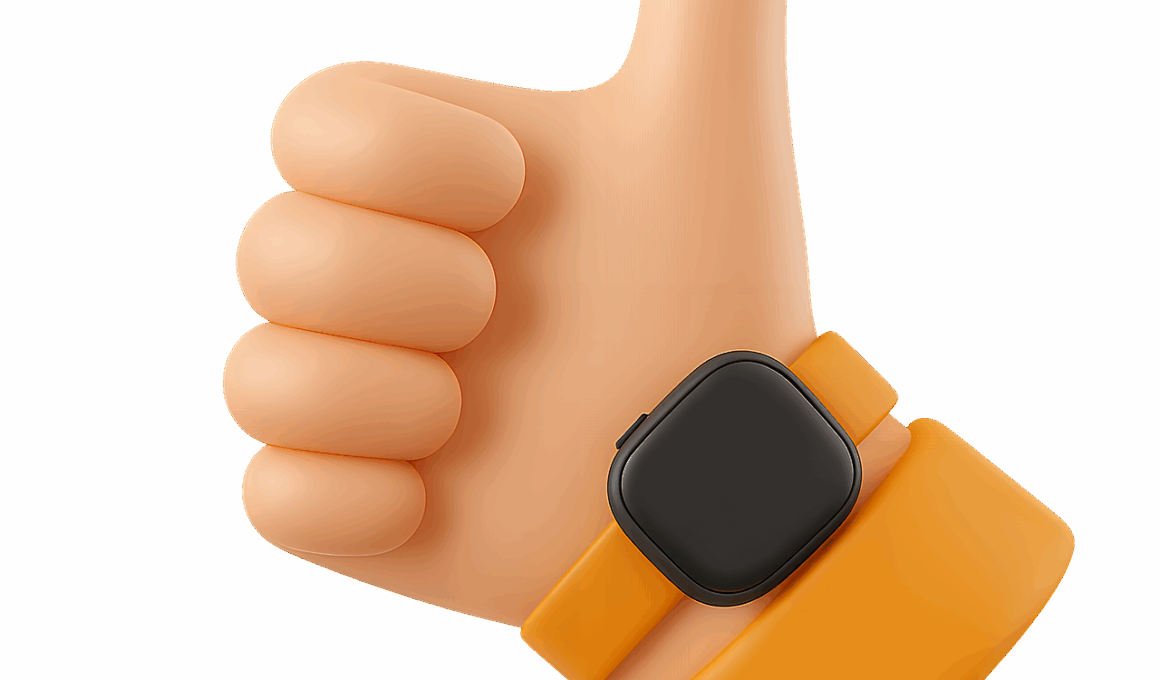Wearables with Gesture Control: Enhancing Safety During Exercise
Fitness technology has consistently evolved, with wearables becoming essential companions during exercise. Among the most innovative advancements, gesture controls in wearables provide intuitive functionality for fitness enthusiasts. These devices allow users to operate features without interrupting their workout flow. Imagine a scenario where you’re in the middle of an intense session, and you want to change a track or check metrics; this is where gesture-controlled wearables shine. With simple swipes or taps, users can access information effortlessly, keeping their workouts seamless and engaging. Moreover, by enabling hands-free navigation, these devices promote safety, particularly when exercising in environments that present potential hazards. Users can concentrate on their performance without getting distracted by cumbersome smartphone operations. Wearables integrating gesture controls also enhance motivation by offering real-time feedback and encouragement. Not only do they make workouts more enjoyable, but they also ensure users remain committed and focused on their fitness goals. In doing so, such devices foster an empowering experience that enhances physical activity while minimizing risks associated with distractions during workouts.
Such a seamless integration of technology allows for a more immersive fitness experience. With gesture controls, wearables can facilitate a variety of enhanced features that ensure users maintain focus on form rather than their devices. For example, users can quickly pause a workout session with a simple hand gesture—this is critical for preventing accidents or injuries while exercising outdoors. Gesture-based commands also support a variety of functions like responding to notifications or altering music playlists without having to physically engage with a screen. This hands-free approach is particularly suitable for runners, cyclists, and outdoor enthusiasts who often need their full attention on the path ahead. Safety becomes paramount as these devices minimize the need to fumble around in pockets or backpacks to manage workout-related tasks. Additionally, many of these wearables feature voice recognition technology to complement gesture controls, providing users with multiple ways to interact with their devices. Setting reminders or receiving coaching tips can be done without physical interaction, allowing for a truly automated experience. Hence, integrating gesture controls not only enhances convenience but significantly promotes safer exercising practices.
The Role of Gesture Controls in Injury Prevention
One of the most significant advantages of wearables with gesture controls is their role in injury prevention. These devices empower users by enabling them to maintain their focus during workouts while simultaneously providing access to crucial feedback. For instance, users can monitor their heart rates, track their distance, and even receive alerts for hydration needs—all through simple gestures. Maintaining awareness of such metrics allows users to recognize when to ease up and when to push harder, drastically reducing the risk of overexertion or injury. In many cases, accidents occur not from intense workouts but from distractions while switching modes or checking devices. By enhancing the design with gesture controls, manufacturers have prioritized user engagement and safety. Moreover, features such as fall detection or emergency alerts can be instantly activated with gestures, making them vital for users who may encounter obstacles while training in unfamiliar terrain. Such rapidly accessible emergency responses could mean the difference between a close call and a serious situation. Therefore, these gesture-enabled wearables not only facilitate convenience but establish an essential safety net for those dedicated to fitness.
Gesture controls also extend the functionality of wearables by allowing customization and personalization options during workouts. Users can program specific gestures to suit their preferences, enhancing user experience tailored to individual needs. For example, a user could set a certain swipe to mark laps or track intervals. This level of control makes wearables incredibly versatile, adapting to diverse exercise routines from yoga to high-intensity interval training. Furthermore, these devices can also integrate with popular fitness applications or social platforms, providing motivation through sharing accomplishments or competing with friends. The social aspect of fitness cannot be understated; competing or collaborating with friends can drive users to push beyond their limits. In these scenarios, gesture controls allow for seamless engagement without missing a beat while still concentrating on performance. The push towards a more connected and motivating environment during workouts fosters camaraderie, making users less prone to quitting. Thus, gesture-controlled wearables become not just tracking devices but essential tools in enhancing the overall fitness experience.
The Future of Wearables with Gesture Control
As technology continues to advance, the future of wearables with gesture control looks exceptionally promising. Innovations around artificial intelligence and machine learning are poised to further enhance the functionality of these devices. With continued research and development, we can expect wearables to understand user behaviors better and predict workout needs even before the user is aware of them. Imagine a wearable that alerts you when it suggests an increase in intensity based on your heart rate pattern or fatigue levels detected through your movements. Such personalization could lead to a more effective fitness regimen tailored specifically for an individual’s needs. Furthermore, advanced gesture recognition technology may lead to even more intuitive commands, allowing for a wider variety of responses. Wearables could not only serve fitness data but also act as virtual coaches, providing instant feedback on performance and form. Enhanced communication features along with augmented reality integration could further elevate the user experience. As manufacturers continue to push the limits of wearable technology, users can expect devices that make exercise safer, simpler, and infinitely more engaging.
The integration of gesture controls into wearables sparks pivotal changes in how individuals approach fitness. Enhanced safety, customized feedback, and improved user engagement create a foundation for an exciting future in health and fitness technology. Individuals utilizing these wearables not only receive real-time data during challenging workouts, but they also gain access to innovative tools that promote physical wellness and safety. This level of interaction bridges gaps between technology and human performance, allowing users to push boundaries without compromising safety. The incorporation of gesture controls is not merely a trend but signifies a paradigm shift toward intuitive user interfaces in health technology. As more inventive features become prevalent, it’s vital for users to remain informed about the capabilities of their wearables to maximize their fitness routines. These advancements pave the way for mindful practices that students can harness to enhance their exercise sessions without risking injury. Therefore, wearables with gesture control will undoubtedly continue to influence the fitness landscape meaningfully. Investing in such technology is critical for anyone committed to both performance improvement and safety.
Conclusion: Embracing the Evolution of Fitness Devices
In conclusion, wearables with gesture control represent a remarkable evolution in fitness technology. With their growth, they enhance not only the safety of exercise routines but also engagement and personalization. Users can effortlessly manage their workouts without constant distraction, allowing for a flow in physical activity that was previously difficult to achieve. The impact of these devices extends to injury prevention, ensuring that users stay mindful of their limits while adapting to various environments. As technology advances, the potential of wearables will expand, offering users even greater insights into their performance and capabilities. As this segment of fitness technology evolves, ensuring that consumers remain informed and up to date with the latest features is essential. This education will enable individuals to take full advantage of their wearable devices, ultimately enhancing their exercise experience. Therefore, embracing innovations in fitness technology is crucial for anyone dedicated to their health and well-being. The future of gesture-controlled wearables is bright, promising enhanced safety, improved efficiency, and a more connected fitness environment that supports user goals.


